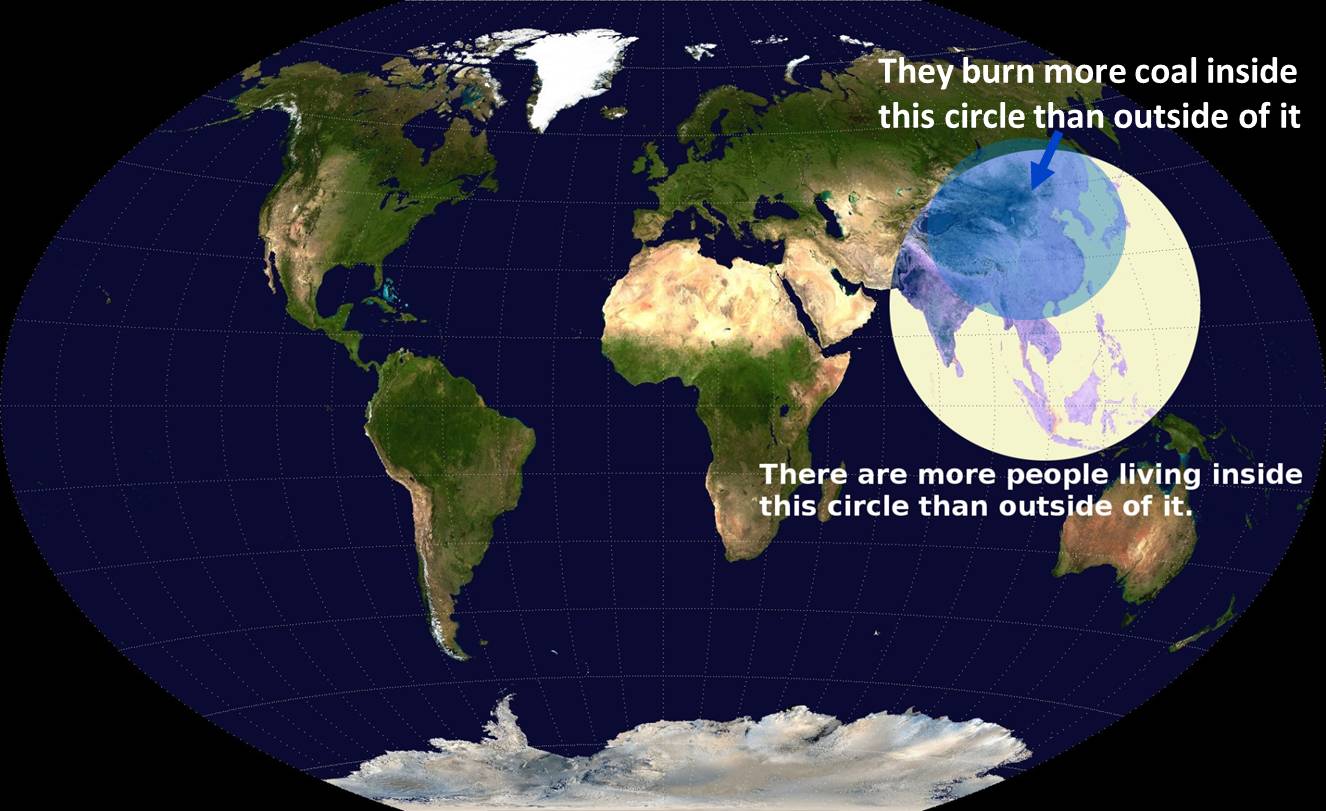In what does Europe beat the world, and what does America excel in? We were also inspired by the world map that went viral on the net last week: more people living inside of a circle than outside of it… We made a couple versions for the energy industry too.
The following mind-blowing map came out last week:
 More people live within the circle than outside of it. Source: reddit (Valeriepieris).
More people live within the circle than outside of it. Source: reddit (Valeriepieris).
We also calculated this population’s share of the world economy as a whole, and in global economic growth in particular. Although the people living within the circle currently account for just around a third of the world’s GDP, around half of global GDP GROWTH over the past 10 years happened there.
China and India’s share of global energy demand growth is also increasing. To give you a concrete example: China consumes around half of the world’s total coal demand.
 They burn more coal inside this circle than outside of it. Data source: BP.
They burn more coal inside this circle than outside of it. Data source: BP.
We’ve recently posted a lot on the US shale gas boom (as well as what may yet turn out to be a shale oil boom); see here and here. It is no coincidence that the revolution began in the United States. Thanks to predictable regulation and a well-established, large market, the corporate background of hydrocarbon exploration and production is much more developed. To summarize this on a map:
 There are more drilling rigs in North America than outside of it. Data source: WTRG economics
There are more drilling rigs in North America than outside of it. Data source: WTRG economics
Europe, on the other hand, is caught somewhere between a rock and a hard place. Its economy is shrinking, as is its energy demand. Hydrocarbon production is also decreasing (with some exceptions, i.e. Norwegian gas output).
However, Europe still ranks first globally in some aspects (so far). Zsopi immediately thought of wine production. Europe, for example, produces more wine than the rest of the world together.
Europe is also leading the pack in terms of renewables. At least for a while yet. (Readers of our blog are probably aware that this is a dubious merit.) The map below highlights this:
 There are more solar panels installed inside this circle than outside of it. Data source: epia.org
There are more solar panels installed inside this circle than outside of it. Data source: epia.org
In 2012, over half of the world’s solar PV capacity was located in Germany, Italy and Spain. Europe as a whole accounted for 70% of capacity. And – as we already wrote – it cost an awful lot.
A bejegyzés trackback címe:
Kommentek:
A hozzászólások a vonatkozó jogszabályok értelmében felhasználói tartalomnak minősülnek, értük a szolgáltatás technikai üzemeltetője semmilyen felelősséget nem vállal, azokat nem ellenőrzi. Kifogás esetén forduljon a blog szerkesztőjéhez. Részletek a Felhasználási feltételekben és az adatvédelmi tájékoztatóban.




